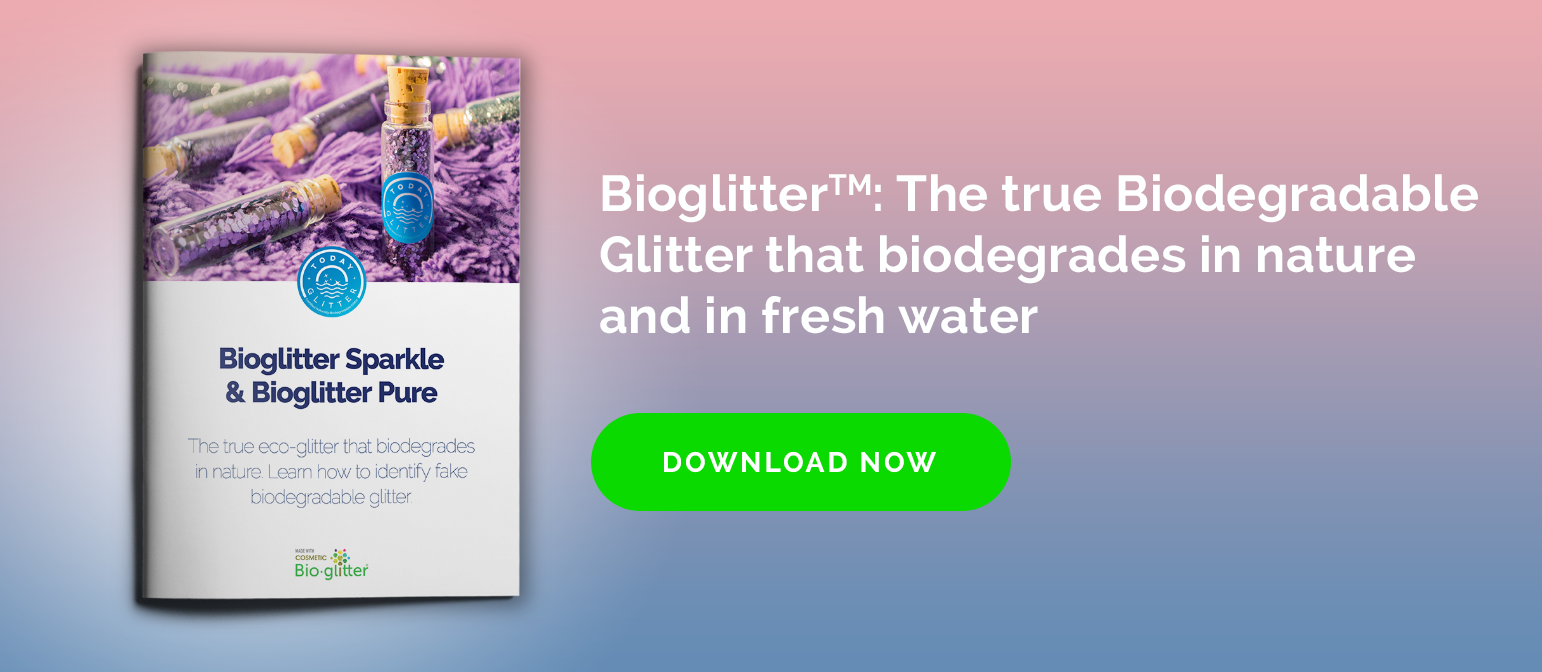Pressed Pigment vs. Eyeshadow. What Is The Best Choice?
When talking about "Pressed pigment Vs. Eyeshadow," you could feel like it is the same thing, just with a slightly different name. However, there is more to that story. Both are "supposed" to be used around the eyes, although one is safer than the other. So, you should stay with the "safer one" and add some Bioglitter™ on top!
Pressed pigments and eyeshadows are makeup terms often used interchangeably without realizing the confusion it may ensue. Yes, they are both used in eye-makeup, but one is safer than the other, at least under the FDA eyes (no pun intended).
Also, they have key differences in composition, effect, and even the way you must apply them on your eyelids. So, at the end of the day, these terms seem like they are a "secret code." But don't worry because we are about to break it all down for you.
Pressed Pigment Vs. Eyeshadow: Key Differences
Let's start with the basics. Eyeshadows are a complex product. They are a mixture of pigments, which add color, and other additional ingredients to create a creamy, easy-to-spread formula. That's where micas, preservatives, and binders come into play.
On the other hand, pressed pigments are really straightforward. They are pigments (color particles) pressed into a pan. Plain and simple.
Since they don't have additional ingredients, they can provide highly vibrant, full-on-your-face colors. Something that eyeshadows wouldn't even get near to. They provide full pigmentation!
However, pigments have a somehow loose texture compared to eyeshadows, so they usually require a good primer or concealer to stay put. Additionally, you have to use a different technique when applying them.
For pigments, a fluffy blending brush is less than ideal. You should use a dense packing brush and apply them carefully, using a tapping motion.
There Is More to The Story
Differences between pigments and eyeshadow go far beyond texture, coverage, color range, and makeup technique.
Companies do not directly advertise pigments as safe for the eyes. Actually, red, pink, and purple pigments could heavily irritate and stain the eyelids. Especially to people with sensitive skin or when used in excess.
Eyeshadows are composed of FDA-approved ingredients. Conversely, pressed pigments are not currently approved by the FDA for application near the eyes.
Beauty companies are legally obliged to drop the name "eyeshadow" when using not approved pigments. Hence the term "pressed pigments." Also, they must put disclaimers on their products, warning their customers about not using them near the immediate eye area.
That's why we said in the beginning that this whole controversy looked like a secret code.
So, Eyeshadows Are Good, and Pressed Pigments Are Bad?
Just for the record, experience-wise, those people with sensitive eyes or allergies can show some irritation, even with FDA-approved pigments.
Additionally, the FDA is not updated on this matter, and its reputation has been called into question (on this matter at least). The European Union's equivalent regulating body, known as the European Medicines Agency, to this day has approved these pigments for use on the eye area.
So, to make things clear, pressed pigments could be considered eye-safe, or at least at a similar level as eyeshadows. When you see brands using the term pressed, the product is made of eye pigments that are safe in the EU but have not yet been approved in the USA.
In general terms, the recommendation is to proceed with caution!

Use Eyeshadows Plus Natural Glitter Instead
To be safe, we recommend you to use eyeshadows and, in any case, reach for some Bioglitter™ instead of pressed pigments.
Our Bioglitter™ Pure will give you a lot of sparks while keeping your eyes safe. Indeed, our natural glitter is cosmetic grade and complies with global cosmetics and rinse-off legislations.
Bioglitter™ has won several awards:
- "Green and Sustainability" category in PCHI Fountain Awards China (2019)
- Gold for innovation at in-cosmetics global (2017 and 2018)
Just apply some primer and carefully dab Bioglitter™ Pure on your eyelids using your ring finger or a precision brush. You can create beautiful and shiny looks that could put any pressed pigment to shame!
Bioglitter™ Is Skin-Safe and Eco-Friendly!
Our Bioglitter is not only skin and eye-safe. It is eco-friendly all the way! Our natural glitter core is made of biodegradable cellulose of eucalyptus from certified plantations. Thus, it replaces the polyester (plastic) core regular glitter has.
So, Bioglitter™ Pure is the first 100% free glitter in the world. It naturally biodegrades under natural conditions without leaving any residue, under 28 days! So you get the glitter without the litter.
To scientifically prove its biodegradability, Bioglitter™ has reputable eco-credentials. It has the "OK Biodegradable WATER" certification by TÜV, aka the freshwater biodegradation testing. Also, it is Verified Microplastic Free by ECHA.
However, look out for fake self-advertised natural or eco-glitters. In most cases, they are trying to greenwash you into believing that they biodegrade naturally. But if they do not pass the freshwater tests or have the results to prove it, most probably they are lying!
Additionally, Bioglitter™ does not contain toxins. It is not CMR, is not GMO, is allergens-free, and cruelty-free.
So if you want to recreate some amazing eye makeup looks, just grab some eyeshadow and Bioglitter™ to spark without the harm! Your eyes and your planet will be most grateful.

